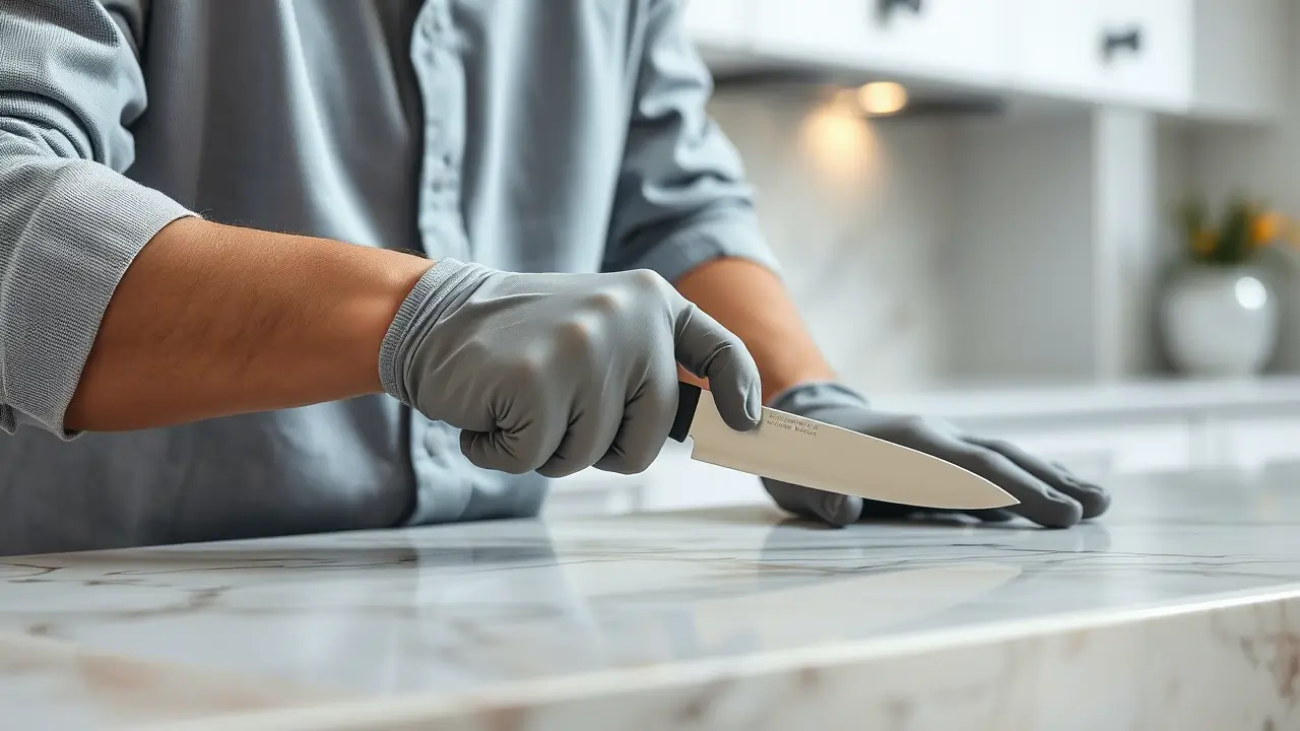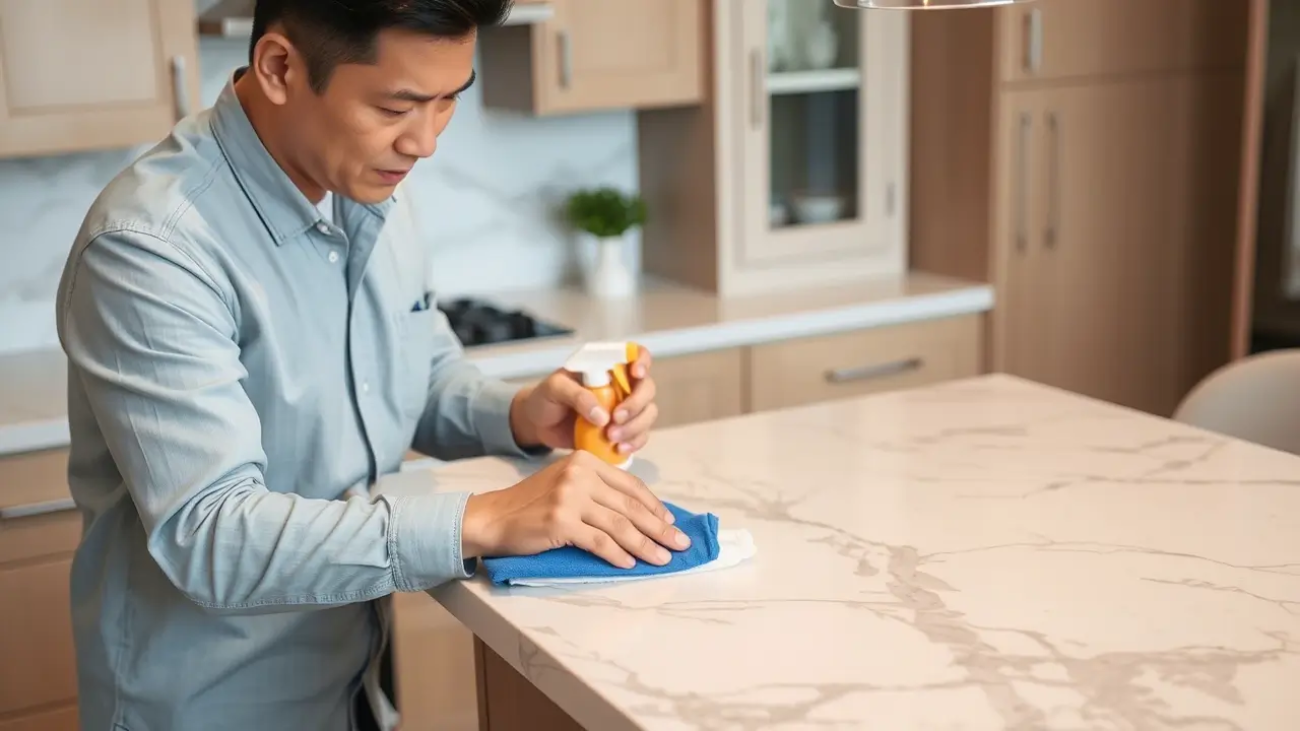Marble has long been celebrated for its beauty and elegance, making it a popular choice in architecture and interior design. As I delve into the world of marble, I find myself captivated by its unique patterns and colors, which are the result of natural geological processes. Formed from limestone under intense heat and pressure, marble is not only a stunning material but also a testament to the Earth’s dynamic history.
Its luxurious appearance has made it a favored option for countertops, flooring, and decorative elements in homes and public spaces alike. Beyond its aesthetic appeal, marble carries a sense of timelessness. I often marvel at how this stone has been used for centuries, gracing the halls of ancient temples and modern-day mansions alike.
However, while I appreciate its grandeur, I also recognize that marble is not without its challenges. One of the most pressing concerns for anyone considering marble for their space is its susceptibility to scratches. Understanding the nature of marble and its properties is essential for anyone looking to incorporate this exquisite stone into their environment.
Common misconceptions about marble
As I explore the realm of marble, I often encounter several misconceptions that can lead to misunderstandings about this beautiful stone. One prevalent myth is that all marble is equally durable and resistant to damage. In reality, the hardness and resilience of marble can vary significantly depending on its specific type and origin.
While some marbles are more robust than others, they all share a certain level of vulnerability to scratching and etching, particularly when compared to harder stones like granite. Another common misconception is that marble is entirely impervious to stains and scratches. Many people believe that once they install marble surfaces, they can treat them like any other material without concern.
However, I have learned that marble requires careful handling and maintenance to preserve its beauty. The porous nature of marble means it can absorb liquids and be susceptible to staining if not properly sealed. This misunderstanding can lead to disappointment for those who expect their marble surfaces to remain pristine without any effort on their part.
Factors that affect marble‘s scratch resistance
When considering the scratch resistance of marble, several factors come into play that I find fascinating. The mineral composition of the marble itself is a significant determinant of its durability. Marble primarily consists of calcite or dolomite, which can vary in hardness depending on the specific geological conditions under which it was formed.
For instance, some marbles contain higher concentrations of quartz or other minerals that can enhance their scratch resistance, while others may be softer and more prone to damage. Another factor influencing scratch resistance is the finish applied to the marble surface. Polished marble, with its glossy sheen, may appear more luxurious but can also be more susceptible to scratches than honed or matte finishes.
I have discovered that while polished surfaces are visually striking, they require more care to maintain their appearance. The choice of finish can significantly impact how well the marble withstands everyday wear and tear, making it essential for me to consider my lifestyle and usage patterns when selecting a finish.
How to test marble‘s scratch resistance
Testing the scratch resistance of marble can be an enlightening experience for anyone interested in this stone. One straightforward method I have found effective involves using a simple object with a known hardness level, such as a coin or a knife blade. By gently dragging the object across an inconspicuous area of the marble surface, I can assess how easily it scratches.
If the object leaves a mark, it indicates that the marble may be more vulnerable than I initially thought. Another approach I have come across involves using the Mohs scale of mineral hardness, which ranks materials from 1 (talc) to 10 (diamond). By comparing the hardness of my marble sample with other minerals on this scale, I can gain insight into its scratch resistance.
For example, if my marble ranks around 3 on the Mohs scale, it may be more susceptible to scratches from everyday objects like keys or utensils. This testing process not only helps me understand my specific piece of marble better but also informs my decisions regarding care and maintenance.
Tips for preventing scratches on marble
Preventing scratches on marble requires a proactive approach that I have found essential for maintaining its beauty over time. One of the most effective strategies is to use coasters and placemats whenever placing items on marble surfaces. By creating a barrier between potentially abrasive objects and the stone, I can significantly reduce the risk of scratches caused by everyday use.
Additionally, I make it a habit to avoid dragging heavy items across the surface, as this can lead to unsightly marks. Another tip I have discovered is to regularly clean my marble surfaces with gentle cleaning solutions specifically designed for stone care. Harsh chemicals or abrasive cleaners can damage the surface and make it more susceptible to scratches over time.
Instead, I opt for pH-balanced cleaners that effectively remove dirt and grime without compromising the integrity of the stone. By incorporating these simple practices into my routine, I can help ensure that my marble remains as stunning as the day it was installed.
Maintenance and care for marble
Caring for marble goes beyond just preventing scratches; it involves a comprehensive maintenance routine that I have learned is crucial for preserving its beauty. Regular sealing is one of the most important steps in maintaining marble surfaces. Sealing helps protect against stains and moisture penetration by creating a barrier on the surface.
Depending on the type of marble and its usage, I typically reseal my surfaces every six months to a year to ensure optimal protection. In addition to sealing, I have found that routine cleaning plays a vital role in maintaining my marble‘s appearance. Using a soft cloth or microfiber towel along with warm water is often sufficient for daily cleaning.
For tougher stains or spills, I may use a specialized stone cleaner designed for marble. It’s essential for me to avoid acidic substances like vinegar or lemon juice, as these can etch the surface and lead to permanent damage. By being mindful of what I use on my marble surfaces, I can keep them looking pristine for years to come.
Alternatives to marble for scratch resistance
While I have a deep appreciation for marble‘s beauty, I also recognize that there are alternatives available that offer greater scratch resistance. One such option is granite, which is known for its durability and hardness. Granite surfaces are less prone to scratching compared to marble due to their mineral composition, making them an excellent choice for high-traffic areas or kitchens where wear and tear are common.
Another alternative worth considering is quartz countertops, which are engineered stones made from natural quartz crystals mixed with resins and pigments. Quartz surfaces are non-porous and highly resistant to scratches and stains, making them an appealing option for those who desire both aesthetics and practicality. As I weigh my options, I find it helpful to consider not only the visual appeal but also the long-term maintenance requirements associated with each material.
Is marble scratch resistant?
In conclusion, my exploration of marble has revealed both its stunning beauty and its inherent vulnerabilities. While it possesses a certain charm that few materials can match, it is essential for me to acknowledge that marble is not inherently scratch-resistant. Factors such as mineral composition, finish type, and proper care all play significant roles in determining how well this stone withstands everyday use.
Ultimately, whether or not I choose to incorporate marble into my space depends on my lifestyle and willingness to invest in its maintenance. With proper care and preventive measures in place, I can enjoy the elegance of marble while minimizing the risk of scratches and damage. However, if scratch resistance is my primary concern, exploring alternatives like granite or quartz may be worthwhile options to consider.
In any case, understanding the nature of marble allows me to appreciate its beauty while making informed decisions about its use in my home or projects.
If you are interested in learning more about the durability of different countertop materials, you may want to check out The Ultimate Guide to Selecting the Best Quartz Surface in Malaysia. This article provides valuable information on the scratch resistance and overall quality of quartz surfaces, which can help you make an informed decision when choosing between marble and quartz for your countertops. For more information on the products and services offered by Solid Top Sdn Bhd, the company behind this informative guide, you can visit their About Us page. And if you are ready to get a quote for your countertop project, you can easily do so by visiting their Request Quote page.
FAQs
Is marble scratch resistant?
Marble is not scratch resistant and can be easily scratched by sharp objects or heavy items dragged across its surface.
How can I prevent scratches on marble surfaces?
To prevent scratches on marble surfaces, it is important to use coasters, placemats, and trivets to protect the surface from sharp or abrasive objects. Regular cleaning and maintenance can also help to minimize the appearance of scratches.
Can scratches be repaired on marble surfaces?
Minor scratches on marble surfaces can be repaired using a marble polishing powder or a professional marble restoration service. Deeper scratches may require more extensive repair work.
What are some alternatives to marble for scratch-resistant surfaces?
Some alternatives to marble for scratch-resistant surfaces include granite, quartz, and engineered stone materials. These materials are known for their durability and resistance to scratches.









